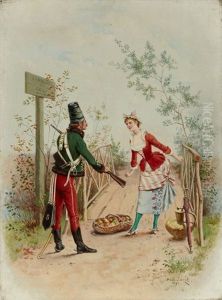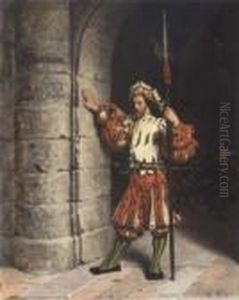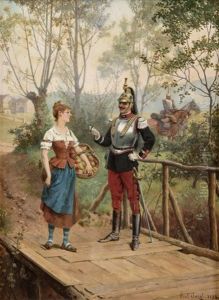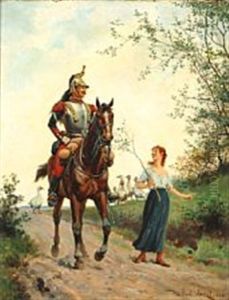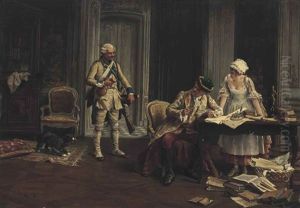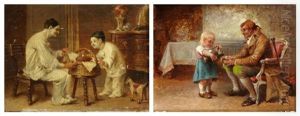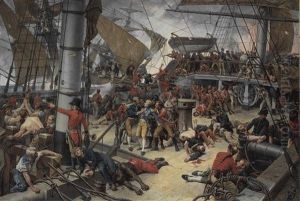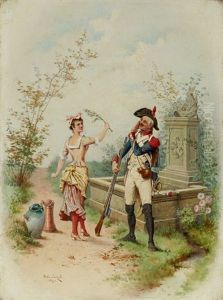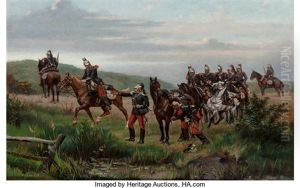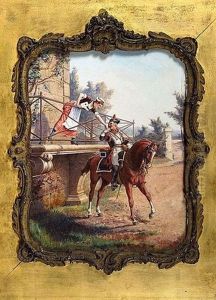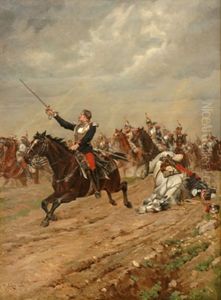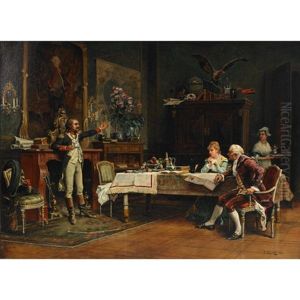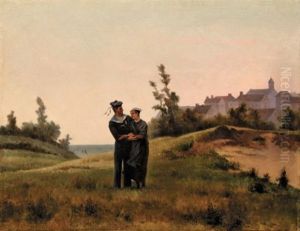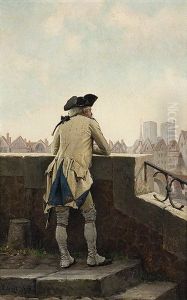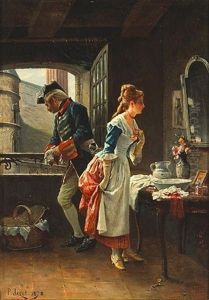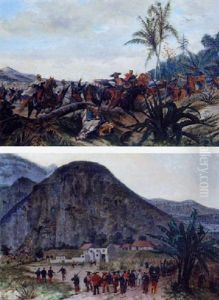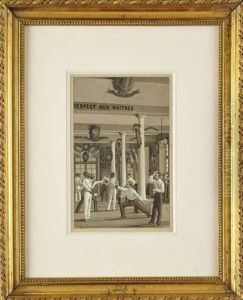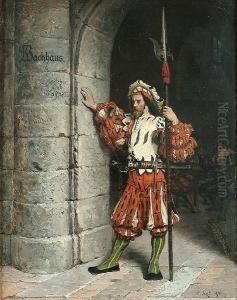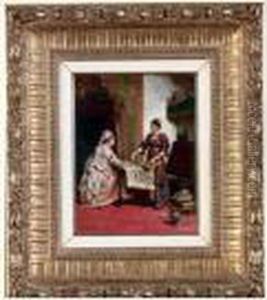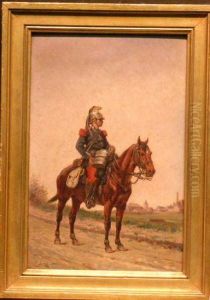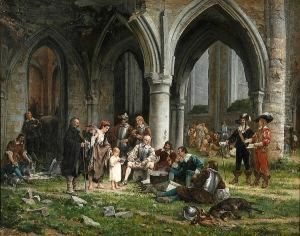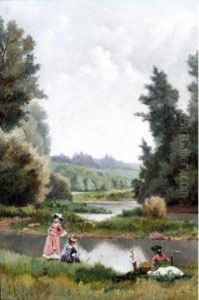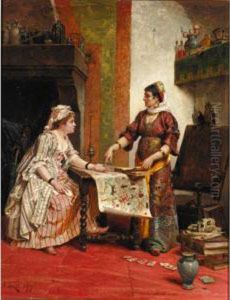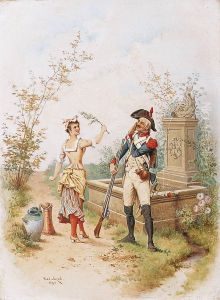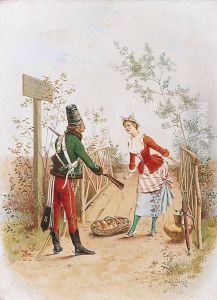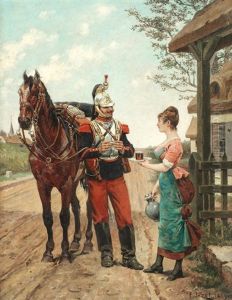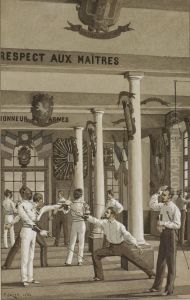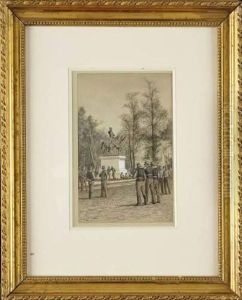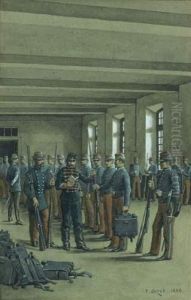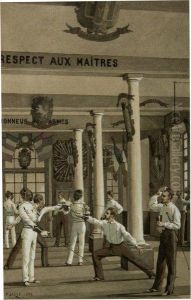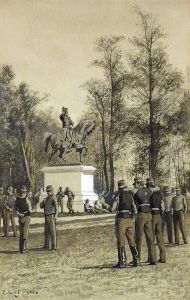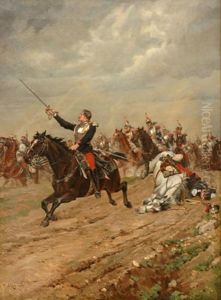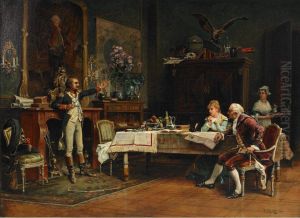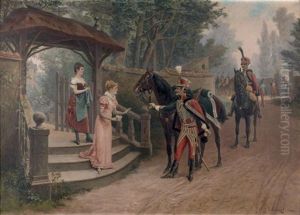Paul Leon Jazet Paintings
Paul Leon Jazet, a French artist and illustrator, was born in 1848 in Paris, France, and lived until 1918. He was part of the vibrant European art scene during the late 19th and early 20th centuries, a period that witnessed significant transformations in art styles and movements. Jazet was particularly known for his exquisite engravings and illustrations that captured the essence of French society and culture during his time.
Educated in the arts from a young age, Jazet honed his skills under the guidance of established artists of the era. He was deeply influenced by the societal changes happening around him, and this reflection is evident in the themes and subjects of his works. Jazet's illustrations often depicted scenes from daily life, historical events, and literary adaptations, showcasing his versatility and keen observational skills.
Jazet's contributions to the art world were not limited to his engravings. He was also involved in painting, though it is his work as an illustrator that garnered him more recognition. His artworks were published in various periodicals and books, helping to popularize his style and bringing his interpretations of contemporary life to a wider audience. Jazet's ability to encapsulate the spirit of the French people and the nuances of their everyday lives made his work valuable from both an artistic and a historical perspective.
Throughout his career, Paul Leon Jazet exhibited his works in several respected art venues, including the Paris Salon, where he received accolades for his artistic achievements. Despite the acclaim, Jazet remained dedicated to his craft, continuously evolving his techniques and exploring new themes in his art.
Jazet's legacy is that of a skilled illustrator who managed to capture and document the essence of his time through his art. His works provide a window into the cultural and social dynamics of France in the late 19th and early 20th centuries, making him an important figure in the study of this period's art history. He passed away in 1918, leaving behind a rich portfolio that continues to be appreciated by art lovers and historians alike.
